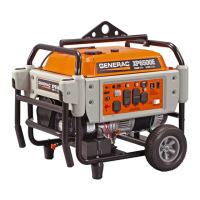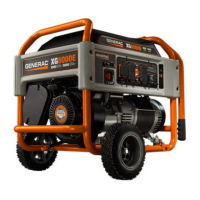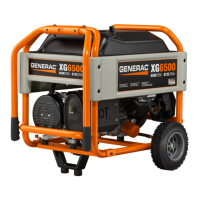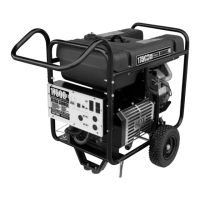Gaseous Fuel Systems
22 Installation Guidelines for Spark-Ignited Stationary Emergency Generators
5.4.7— Recommended Fuel Pressure Regulators
Use only direct acting fuel pressure regulators, such as those made by Fisher® or Maxitrol® or any other listed regu-
lator manufacturer.
5.4.8— Primary Fuel Pressure Regulator
The following are the recommended “best practices” with regard to specifying, sizing, and installing the primary fuel
pressure regulator.
1. Verify that the regulator:
• Is sized to have a fuel flow delivery rating (CFH) at least 10% greater than the 100% rated kW fuel consumption
requirement of the generator.
NOTE: The recommended selection for orifice diameters is to use the smallest orifice that will still pro-
vide a CFH fuel flow rate at least 1.1 times greater than the required full load CFH rating of the generator
set.
• Is approved for a mechanized engine application. A standard HVAC type regulator or standard appliance regula-
tor is prohibited.
• Has an accuracy rating of 1% or less and/or have a maximum allowable pressure droop rate of 1-2 inches w.c.
NOTE: Droop is the reduction of outlet pressure experienced by pressure-reducing regulators as the
flow rate increases. It is stated as a percent, in inches of water column, or in pounds per square inch,
and indicates the difference between the outlet pressure at low flow rates and the outlet pressure at the
published maximum flow rate. Droop is also called offset or proportional band. For proper generator
operation, a maximum of 1-2 in. w.c. droop is required at each operating condition, that is, static, crank-
ing, running at no load, and running at full load.
• Has a spring rating within the range of 5 to 14 inches w.c.
2. Be sure that the generator has a dedicated fuel supply which is not shared with any other appliances (furnace,
water heaters, ranges, etc.).
3. Check the inlet pressure measured at the regulator body inlet connection when the regulator appears unable to
pass the published flow rate. Supply piping up to the regulator can cause significant flowing pressure losses.
4. Be sure the regulator is flowing at least five percent of the normal operating flow when adjusting the pressure set
point.
5. Expect approximately a one degree drop in gas temperature for every 15 psid (differential) across the regulator
due to the natural refrigeration effect.
NOTE: Freezing is often a problem when the ambient temperature is between 30º and 45º F (-1º and 7º C),
particularly with LP-V systems.
6. Point vents down to help avoid the accumulation of water condensation or other materials in the spring case.
7. Keep vents open. Do not use long, small diameter vent lines. Follow the rule-of-thumb: use the next nominal pipe
size for every ten feet of vent line, and use three feet of vent line for every elbow in the line.
8. The connection point on the generator is the end of the manufacturer supplied flex hose. The flex hose is the
same size as the connection point on the generator frame rail (see installation drawings). It is permissible to
install one elbow (90º) and a short nipple between the flex hose and frame rail connection point to allow the flex
hose to parallel the frame rail for installation purposes.
5.5 — Pipe Sizing Considerations
5.5.1— General
Consult a local gas distributor or licensed installer when sizing and installing the piping for any gaseous fuel supply sys-
tem. When using a local gas distributor or installer, be sure they have the proper documentation to support their recom-
mendations. The fuel system requirements and best practices conveyed in this manual must be provided to the
representative responsible for sizing the fuel system. The final test of the system is measuring the fuel pressure as
described in Subsection 5.6.1. If the pressure requirements are not met, then the fuel supply system is not correct.

